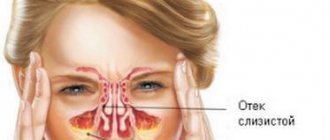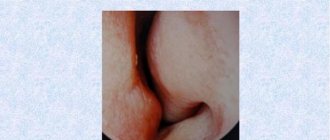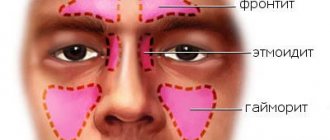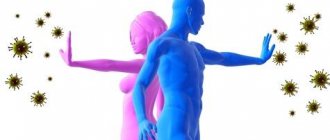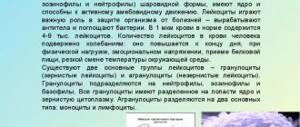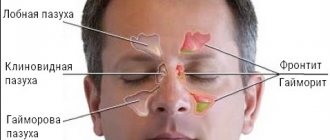Purulent sinusitis is an infectious process that affects the mucous membrane of the paranasal sinuses. It develops most often after a complication of a respiratory viral disease, when a bacterial infection occurs against the background of delayed treatment. Due to the proximity of brain structures, treatment of purulent sinusitis cannot be postponed until later. Otherwise, the infection may spread to the meninges with the development of meningitis and abscess. The assessment of symptoms and treatment of ENT infections is the responsibility of a qualified otolaryngologist. You should not use methods with unproven effectiveness.
Classification of sinusitis
Depending on the location of the infectious process, experts distinguish several types of sinusitis:
- sinusitis - damage to the maxillary sinus;
- ethmoiditis - the inflammatory process covers the ethmoid labyrinth;
- frontal sinusitis - the disease develops in the frontal sinus of the nose;
- sphenoiditis - the infection involves the sphenoid sinus.
Among sinusitis, the leading place is given to sinusitis. The disease can begin with a slight runny nose, and then develop into acute purulent sinusitis with severe pain, high fever and a sharp deterioration in well-being. The infectious process is often prolonged and occurs chronically with exacerbations with each acute respiratory infection.
Provoking factors
Purulent sinusitis can bother a person for years until the effects of predisposing factors are minimized. The nasal cavity constantly communicates with the sinuses, which are connected to it by rather narrow passages. If the outflow of mucus is disrupted and secretion stagnates, then conditions arise that are favorable for the proliferation of infectious pathogens.
Self-cleaning of the nasal passages can worsen with various developmental anomalies, injuries and deformations of the intranasal structures. Experts classify disorders such as a deviated nasal septum and chronic rhinitis with severe hypertrophy of the mucous membrane as risk factors for the development of sinusitis.
Frequent viral infections lead to swelling of the lining of the paranasal sinuses and the production of large amounts of mucous secretion. Due to swelling, the sinuses narrow and cease to ventilate. This is a definite impetus for the predominance of opportunistic flora and the active reproduction of infectious pathogens. Many viruses and microbes have developed resistance to a large number of antibacterial drugs, which complicates the treatment of purulent sinusitis and increases the risk of complications.
Often, sinusitis recurs against the background of polyps, which are constantly injured, causing swelling and inflammation of the mucous membrane. Neoplasms in the nasal cavity (regardless of their size) act as a source of chronic infection. Polyps, adenoids and other growths of the mucous membrane of the ENT organs reduce the quality of nasal breathing, and in childhood they can even lead to developmental delays, the formation of asymmetry of facial features and changes in the facial skeleton due to the child’s habit of constantly breathing through the mouth.
Diagnosis of sinusitis
The diagnosis is made by an ENT specialist, assessing the characteristic clinical manifestations of the disease, the results of the examination and examination. Diagnostics allows you to clarify the location of the infectious-inflammatory process and select an effective treatment regimen.
For sinusitis, the following tests are prescribed:
- radiography of the sinuses;
- CT scan of the paranasal sinuses;
- MRI of the brain;
- laboratory blood diagnostics.
The examination may be supplemented with other procedures (as indicated). If a specialist doubts the diagnosis, it is recommended to undergo not only X-ray diagnostics, but also MRI. Sometimes exacerbation of sinusitis is caused by soft tissue tumors, which are difficult to see using x-rays.
Signs of purulent sinusitis
Purulent sinusitis can occur in acute or chronic form. At the initial stage, the patient is concerned about the signs of a common respiratory viral disease:
- weakness;
- nasal congestion;
- clear or serous nasal discharge;
- body aches;
- temperature increase;
- itching of the nasal mucosa, sneezing.
The infection affects the deep tissues of the nasal sinuses, the discharge from the nose becomes viscous and purulent, and breathing becomes very difficult. Sinusitis is especially difficult for children who have naturally narrow nasal passages and, due to their congestion and stagnation of mucus, experience severe headaches. In this condition, it is better to show the child to a pediatrician as soon as possible to eliminate the risk of infection spreading to nearby organs.
Adults also often experience headaches due to sinusitis. Depending on its form, pain may have different intensity and localization. The pain can radiate to the orbit, ear, forehead, neck, and be accompanied by neurological disorders. With frontal sinusitis, photophobia sometimes occurs and the sense of smell decreases. After clearing the sinuses of the accumulated mucopurulent secretion, relief occurs for a short time. The inflammatory-infectious process can affect bone structures, cause the formation of fistulas, and the development of osteomyelitis.
The causative agents of the disease are able to spread through the bloodstream to the internal organs. If the patient’s immunity is weakened, sinusitis infection penetrates the bronchi and lungs, often causing exacerbation of chronic pathologies of the kidneys and bladder.
Sinusitis: symptoms and treatment
In the public consciousness, a runny nose is not considered any serious illness: “Well, what kind of illness is this that won’t even get you sick leave!” Such a dismissive attitude towards this seemingly trivial disease seems fundamentally wrong.
A runny nose can serve as a precursor to a number of much more serious diseases. Sinusitis is one of them. Sinusitis is an inflammation of the mucous membrane localized in one or more paranasal sinuses.
An ENT doctor has to register sinusitis in an outpatient card in 30% of cases of the total number of diseases of this profile. Depending on the location there are :
- inflammation of the cells of the ethmoid labyrinth (ethmoiditis). This is the most common type of sinusitis;
- inflammation of the maxillary paranasal sinus (sinusitis);
- inflammation of the frontal paranasal sinus (frontitis);
- inflammation of the sphenoid sinus (sphenoiditis). Etiology and pathogenesis of sinusitis
Etiology and pathogenesis of sinusitis
Sinusitis can rightfully be called a polyetiological disease, because it may be based on a whole range of reasons. Sinusitis develops as a result of a decrease in the protective function of the mucous membrane of the paranasal sinuses and nasal cavity, and a violation of general and local immunity.
Anatomical factors (congenital or traumatic deformation of the nasal septum, polypous growths in the nasal cavity), and climatic factors can play a significant role in morbidity.
The inflammatory process can be potentiated by both bacterial microflora and viruses, and the “initiator” in most cases is a virus, which is subsequently joined by bacterial microflora.
The most “unreliable” viruses in relation to sinusitis are adenovirus, parainfluenza, and respiratory syncytial virus. Of the bacterial microflora, streptococcus, Haemophilus influenzae, Moraxella, and Escherichia coli are most often involved in the development of sinusitis.
Fungi (aspergillus, candida) can also have their say in the inflammatory process. The importance of anatomical factors in the development of sinusitis has already been discussed above.
How is this implemented? It is believed that deformations of the nasal septum sooner or later lead to disruption of air circulation in the paranasal sinuses, which prevents the removal of mucus from them. The partial pressure of oxygen drops.
All this reduces the protection of the nasal mucosa from infections. Like almost any disease, sinusitis can be acute or chronic.
Acute sinusitis. Symptoms
There is no point in dwelling on the symptoms of each type of sinusitis depending on the location, since their clinical picture is very similar:
- difficulty breathing through the nose (on either side);
- purulent nasal discharge;
- headache. There is already a sign that allows you to differentiate sinusitis - this is the localization of pain. However, the headache can also be diffuse in nature, with irradiation to different areas of the head (back of the head, lower jaw, parotid region). A distinctive feature of sinusitis is increased headache when tilting the head and with sudden movements;
- increase in temperature to subfebrile or febrile values;
- swelling of the nasal mucosa, and in severe cases - swelling of the cheeks or eyelids;
- indicators characteristic of inflammation in a blood test (accelerated ESR, increased leukocytosis).
Diagnosis of acute sinusitis
- radiographs of the paranasal sinuses;
- endoscopy;
- computed tomogram;
- diagnostic puncture.
Treatment of acute sinusitis
Treatment of acute sinusitis aims to destroy the purulent focus in the paranasal sinus (sinuses), restore the patency of the openings in the sinuses, and normal functioning of the mucociliary (protective) apparatus of the nasal mucosa.
These goals determine the choice of medications: vasoconstrictor drugs (naphthyzin, galazolin, sanorin, etc.). This is a local symptomatic treatment route aimed at restoring the patency of the natural sinus anastomosis, reducing swelling of the mucous membrane, restoring the drainage function and aeration of the inflamed sinuses; antibiotics.
It is believed that the most effective, covering the entire spectrum of known microorganisms that cause sinusitis, are betalactam penicillins in combination with a betalactamase inhibitor (Augmentin, Amoxiclav), third generation cephalosporins (cefotaxime, ceftazidime, cefixime), macrolides (clacid, sumamed), fluoroquinolones (as drugs choice if you have allergies); antihistamines (Erius, Zyrtec, Telfast, Erespal); mucolytics (sinupret, rhinofluimucil, acetylcysteine). Physiotherapy (ultrahigh-frequency therapy, ultraviolet irradiation, microwave therapy) is widely used in the complex treatment of acute sinusitis. And the most unpleasant thing is puncture (puncture) of the sinuses . This radical method is indicated for severe pain, high fever and lack of effect from conservative treatment, i.e. there must be a good reason for choosing this method.
Chronic sinusitis
This is the same inflammation of one or more paranasal sinuses, but longer lasting. There are different opinions regarding the temporal gradation of sinusitis in the medical literature; in some sources, sinusitis lasting more than 1 month is considered chronic sinusitis, while other sources give the start of chronic sinusitis starting from the 3rd month.
The truth, as usual, is somewhere in the middle, although the period of the disease between the 1st and 3rd month can be called subacute sinusitis. Chronic sinusitis is, as is not trivial, untreated acute sinusitis. It is also based on a persistent violation of the patency of the paranasal sinuses, coupled with a weakened immune system.
At the time of exacerbation, the clinical picture of chronic sinusitis is no different from acute, and during remission, chronic sinusitis “behaves” more restrained: there are mild headaches, nasal congestion, periodic purulent discharge, sporadic increase in temperature, impaired sense of smell, decreased performance, but all this is somewhat “blurred”, unexpressed. The treatment tactics for chronic sinusitis have undergone certain changes in recent years. If earlier doctors were inclined towards a purely radical method, today they are trying to overcome chronic sinusitis with “little blood” in the most literal sense of the word, using minimally invasive treatment options; fortunately, modern endoscopic diagnostic methods provide surgeons with much more opportunities. Using an endoscope, the surgeon, controlling the process, penetrates the paranasal sinus (frontal, sphenoid, etc., depending on the location of the inflammation) and expands its natural anastomosis, clearing it of “impurities” (pus, mucus, etc.) . Well, in severe cases of the disease there is no way out of surgical methods. In principle, it is enough for a patient with acute sinusitis to be shown color slides of radical surgical interventions on the paranasal sinuses so that he forever learns one of the main medical truths: in no case should the pathological process be started, then it will be much more difficult to cope with it both for the doctor and yourself.
Source: https://www.horsluh.by/interesting/sinusit-simptomy-i-lechenie/
Treatment of sinus inflammation
Treatment of purulent sinusitis has the following goals:
- stop the inflammatory process;
- destroy most infectious pathogens in the sinuses;
- prevent complications;
- restore normal nasal breathing;
- get rid of headaches and other symptoms of the disease;
- ensure drainage of the sinuses;
- prevent the transition of an acute process to a chronic one.
To normalize the outflow of mucus from the sinuses, experts prescribe local vasoconstrictors, which additionally eliminate tissue swelling and quickly restore nasal breathing. It is recommended to use local antiseptics to suppress the infectious process inside the nasal cavities. Purulent sinusitis is treated with antibiotics and often a sinusotomy is performed - opening the nasal sinus and freeing it from pus.
The antibacterial agent is selected taking into account the sensitivity of the infectious agent to it. It is important to choose the right antibiotic so as not to waste time taking an ineffective drug. Particular attention is paid to the action of predisposing factors. If sinusitis develops as a result of a long course of allergic rhinitis, serious antiallergic therapy is used. The patient is advised to avoid any contact with allergens and promptly use antihistamines when the first signs of a runny nose and lacrimation appear.
After the acute inflammatory reaction subsides, physiotherapeutic procedures are carried out, the purpose of which is to speed up the restoration of the mucous membrane and prevent relapses. With frequent sinusitis, the microflora of the nasal mucosa changes towards opportunistic flora. This significantly reduces local immunity and sharply increases the risk of developing infectious diseases. To restore the protective functions of the mucosa, special local drugs with an immunostimulating effect can be prescribed.
If conservative therapy is ineffective, and specialists cannot use it to reduce the number of sinusitis relapses per year, surgical treatment is recommended.
Treatment of the disease
Treatment of the disease in the initial stages is carried out using drug therapy. To ensure its effectiveness, it is necessary to use complex therapy. In order to eliminate the source of infection, antibiotic therapy must be used. Most often patients are prescribed:
- Erythromycin;
- Amoxiclav;
- Ciprofloxacin;
- Cefixime, etc.
To support the intestinal microflora, which is exposed to the negative effects of antibiotics, the use of probiotics – Linex, Bifidum, Acylact, etc. – is recommended.
In order to alleviate the patient's condition, it is necessary to prescribe symptomatic therapy. Doctors recommend the use of vasoconstrictor medications, which are available in the form of drops or sprays.
At the same time, it is recommended to rinse the sinuses. In most cases, non-steroidal drugs are used - Sanorin, Tizin, Nazivin, Naphthyzin . If the need arises, doctors prescribe medications that have a long-term effect - budesonide.
In order to liquefy the contents in the nasal sinuses and facilitate its outflow, it is necessary to treat with mucolytics -
Acetylcysteine, Carbocysteine.
To eliminate bacteria, the inflammatory process and allergic manifestations, it is necessary to use drugs that have a combined effect - Protargol, Isofra.
To combat allergic reactions, non-steroidal drugs are taken - Telfast, Claritin, Loratadine. Strengthening the body's immune system is carried out with the help of immunomodulators - Pentoxyl, Immunal, Mexidol.
To ensure maximum effectiveness of treatment, regular physical therapy is necessary. Most often in this case, electrophoresis or inhalation is used. Also, the patient’s nasal cavity is treated using ultra-high frequencies of an electromagnetic field.
It is mandatory for the patient to rinse his nose. For this purpose, use saline solutions or special products that can be purchased at the pharmacy. In most cases, Furacillin, Aqualor, and Dolphin are used.
If drug treatment is ineffective and symptoms persist, then surgical intervention is recommended. Patients' sinuses are pierced using a special needle under local anesthesia and the purulent contents are pumped out.
After this, the sinuses are washed using antiseptics and antibiotics. If it is impossible to wash out the purulent contents, an operation is performed in which the posterior end of the middle concha is removed.
ethnoscience
To ensure maximum effectiveness of therapy, you can use traditional medicine. Radish is quite effective in this case.
It must be peeled and grated on a fine grater. Juice is squeezed out of the resulting mass and used for nasal instillation. Place two drops of the product into each nasal passage. The procedure must be carried out three times a day.
Kalanchoe is characterized by a high level of effectiveness during the treatment of sinusitis. To prepare the medicine, you need to cut off several leaves of this flower and place them in a dark and cool place. After this, you need to pass the leaves through a meat grinder. The juice is squeezed out of the resulting pulp. It must be infused for several days until sediment appears.
After this, 20 parts of juice are mixed with one part of 20 percent alcohol. This product must be used three times a day. The product should be stored in the refrigerator.
You can also prepare a medicine with cyclamen, onions and aloe. All components are crushed and mixed in equal proportions. The same amount of Vishnevsky ointment must be added to the product. The medicine must be used to lubricate the sinuses.
Sinusitis is a rather unpleasant disease that is accompanied by certain characteristic symptoms. Treatment of bacterial sinusitis should be carried out comprehensively using a variety of medications. Before using any of them, you should consult your doctor.
Surgeries for sinusitis
The goal of surgical treatment for sinusitis is to restore patency of the sinuses and normal breathing. ENT specialists often use a low-invasive technique for draining the paranasal sinus with a catheter, providing sinus lavage and administering antibiotics or antiseptic compounds.
Surgery on the paranasal sinuses is used for frequently recurrent purulent sinusitis that is resistant to modern treatment methods, including antibiotics and puncture. During surgery, specialists remove the contents of the sinus and form a wide anastomosis between the infected sinus and the nasal cavity. Surgical procedures are also performed to remove foreign bodies and restore the integrity of the sinus walls after domestic and professional injuries.
To get rid of nasal polyps, modern specialists use minimally invasive endoscopic techniques. Polypous growths are removed using laser equipment. The operation is carried out under the control of an endoscope, which eliminates the risk of accidental injuries and improves the quality of the operation. The laser beam destroys the polyp, after which specialists coagulate the base of the tumor, preventing bleeding. The surgical intervention is performed on an outpatient basis and does not require hospitalization of the patient. The laser has an anti-inflammatory effect and suppresses the development of infection. It is recommended to remove polyps in a timely manner, as they are prone to magnetization and can cause cancer.
If a patient with chronic sinusitis has a deviated nasal septum, the anatomical position is restored during septoplasty. Operations are performed using the classical method or using an endoscope. Additional correction of the nasal turbinates is possible (according to indications).
After surgical treatment, specialists prescribe a prophylactic course of antibiotics. It is recommended to avoid viral infections for several months. To prevent complications, it is necessary to follow all medical prescriptions and protect your nose from accidental injuries and hypothermia.
Viral and bacterial sinusitis - symptoms and treatment
Viral and bacterial sinusitis differ not only in the type of pathogen - the diseases manifest themselves, progress and are treated differently. Let's understand together these two etiologically different types of the same disease.
Viral sinusitis. Etiology
Statistics show that viral infection is the most common cause of all sinusitis and rhinosinusitis. Almost all known types of respiratory viruses are able to cause inflammation of the paranasal sinuses, but most often the causative agents are:
- rhinoviruses;
- influenza and parainfluenza viruses;
- coronaviruses;
- respiratory syncytial viruses;
- adenoviruses;
- enteroviruses.
Some patients ask the not entirely correct question: is viral sinusitis contagious? Sinusitis itself cannot be transmitted from person to person: only the causative agents of the disease - viruses - have this ability.
Note that respiratory viruses are very contagious, and children, the elderly and people with a reduced immune response are more vulnerable than others.
However, it should be borne in mind that the manifestations of a viral infection can be different and do not necessarily result in maxillitis.
Bacterial sinusitis
Acute bacterial maxillitis is closely associated with viral infections of the upper respiratory tract. Trauma, allergies, neoplasms, granulomatous and inflammatory pathologies, dental infections, anatomical changes and other factors may also play a role in the development of the disease.
Etiology of acute sinusitis
The most common causes of acute bacterial sinusitis are three types of bacteria:
- Streptococcus pneumoniae - pneumonia streptococcus; S. pneumoniae accounts for 20–43% of cases of acute bacterial maxillitis in adults. In recent years, there has been a tendency towards increasing resistance of this microorganism to antibiotics, which is a serious obstacle in the treatment of infection;
- Haemophilus influenzae - hemophilus influenzae; Haemophilus influenzae is responsible for 22–35% of cases of acute inflammation of the maxillary sinuses. Note that this microorganism is capable of producing beta-lactamase, which destroys penicillin and some cephalosporin antibiotics;
- Moraxella catarrhalis - moraxella. Moraxella accounts for 2–10% of cases of acute sinusitis. About 98% of bacteria isolated from the sinuses are resistant to beta-lactam antibiotics, making the disease much more difficult to treat.
In 10% of cases, acute bacterial maxillitis is associated with Staphylococcus aureus - Staphylococcus aureus, which is also resistant to many antibacterial drugs.
In isolated cases of nosocomial bacterial sinusitis, the cause of infection is:
- Pseudomonas aeruginosa (Pseudomonas aeruginosa), 15.9% of cases;
- Escherichia coli (E. coli), 7.6% of cases;
- Proteus Mirabilis (Proteus), 7.2% of cases;
- Klebsiella pneumoniae, klebsiella;
- Enterobacter species (enterobacteria) - 60% of cases.
Etiology of chronic sinusitis
Chronic and acute sinusitis can be caused by various bacteria. The microorganisms responsible for the development of chronic inflammation of the maxillary sinuses include both bacteria traditional for the acute process and some other microorganisms, including:
- Staphylococcus aureus - Staphylococcus aureus, including its methicillin-resistant strains;
- coagulase-negative staphylococci;
- Streptococcus intermedius;
- Pseudomonas aeruginosa;
- species of gram-negative bacteria Nocardia;
- anaerobic microorganisms - peptostreptococci, bacteroids, fusobacteria and some others.
Microbiological studies of chronic maxillitis show that the infection is often polymicrobial in nature. In most cases, infection is caused simultaneously by 2–6 microorganisms. This fact is important to consider when selecting antibacterial therapy.
Symptoms of acute and chronic bacterial maxillitis
Symptoms of acute bacterial sinusitis include purulent nasal discharge, nasal congestion, headache and facial pain, impaired or complete loss of smell, cough due to mucus running down the back of the throat, fever, including high temperatures (39 degrees and above), fatigue, toothache (in the area of the upper teeth), stuffy ears.
In the chronic course of maxillitis, the manifestations of the disease are erased - the temperature is usually low-grade (up to 37.5 degrees), the pain can be mild or moderate. The standard symptoms of sinusitis include bad breath and sometimes complete loss of smell.
Despite the visible difference between the symptoms of viral and bacterial maxillitis, sometimes it is quite difficult or almost impossible to differentiate these two close diseases.
The Infectious Diseases Society of America has proposed using a specific algorithm to establish an accurate diagnosis.
According to the scheme, the diagnosis of bacterial sinusitis (or other type of sinusitis) is established if the patient has any three symptoms of the following:
- persistent symptoms lasting 10 days or longer without any evidence of improvement;
- onset with severe symptoms and temperature above 39 degrees;
- purulent nasal discharge or facial pain for 3–4 days in a row, especially at the onset of the disease;
- a sharp deterioration in the symptoms of the disease (increase in temperature to 39 degrees or higher, severe headache, increased nasal discharge after recovery from ARVI has already begun).
